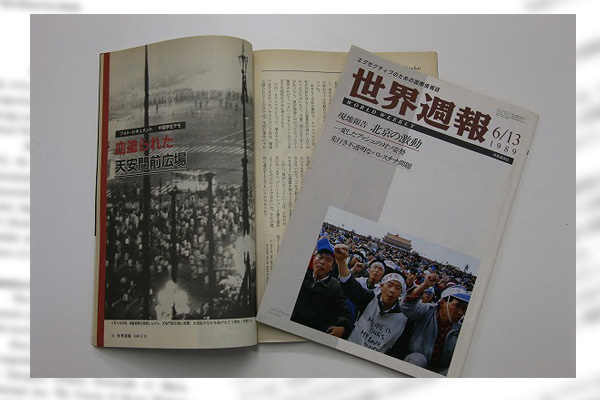The world-shaking Tiananmen Square massacre is a dark and hidden part of the Chinese Communist Party’s 100-year history. In June 1989, the People’s Liberation Army of the Communist Party fired guns at students and citizens, using tanks to crack down on a pro-democracy movement. The party’s totalitarian rule has remained unchanged for three decades since the massacre. China is predicted to eventually outdo the United States in economic and military power. May the world tolerate the spread of the China-centric international order?
Emperor’s visit lent a helping hand to China
The Tiananmen massacre began on June 4, 1989, as Chinese authorities concluded protesters’ demand for democracy and criticism against the corrupt Communist Party as an upheaval. While the then martial law command announced the number of student victims in the midnight massacre as 23, rumors estimated the number at thousands. Frighteningly, however, the totalitarian authorities suddenly claimed that none died at the Tiananmen Square.
Five months after the Tiananmen incident, the Berlin Wall fell, putting an end to the East-West Cold War. While Western countries imposed sanctions on China for the Tiananmen massacre, Japan lent a helping hand to China by implementing the emperor’s China visit in 1992. Did the Japanese action pave the way for China’s dramatic rise seen today?
The Japanese emperor’s China visit had a “positive effect” in making a breakthrough in the Western sanctions, former Chinese Vice Premier Qian Qichen said nonchalantly in his memoir titled “Ten Episodes in China’s Diplomacy” that he published in 2003. Japan, a generally stable island nation, can be easily cajoled by the fiendish diplomacy of the Chinese continent where barbarians have repeated rise and fall.
The Chinese Communist Party uses intimidation and violence to respond to occasional democratization demand and tries to find an external vent for citizens’ discontent. It has successfully united 1.38 billion Chinese people by inspiring patriotism and turning China’s adversaries Japan and the U. S. into scapegoats to increase tensions. Domestic security spending surpasses mammoth defense expenditure. The party’s power structure and behavior have remained unchanged.
Japanese diplomacy should not repeat mistakes
Chinese President Xi Jinping aims to attract people to the “dream of the Chinese nation.” He has come up with a19th century imperialist slogan of leading the Chinese nation to enjoy a preeminence in the world by the centennial of the People’s Republic of China in 2049. His idea came out of self-protection as the communist party’s domestic reign would become difficult if people only grow affluent.
As three decades have passed since the Tiananmen massacre, however, the world might have entered a period of adjustment. Five months before the Tiananmen incident, Japan changed its imperial era name from Showa to Heisei upon the death of Emperor Showa. Three decades after the change, Japan changed the era name again, this time to Reiwa. The U. S. has initiated a trade war with China under the Xi regime due to bad Chinese habits such as unfair trade practices infringing on intellectual property rights, the forcible transfer of technologies and state subsidies.
When U.S.-China relations deteriorate, Beijing usually makes a cajoling approach to Japan. As such approach represents a temporary tactical retreat, it may be reversed at any time according to China’s convenience. The Japanese government should not commit the folly of being politically utilized by China as was the case with the emperor’s China visit.
Hiroshi Yuasa is a Planning Committee member and a senior fellow at the Japan Institute for National Fundamentals. He is also a columnist for the Sankei Shimbun newspaper.


